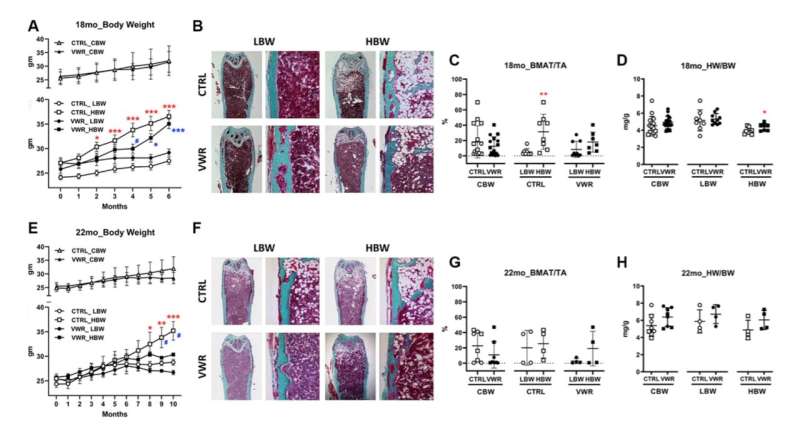This article has been reviewed according to Science X's editorial process and policies. Editors have highlighted the following attributes while ensuring the content's credibility:
fact-checked
proofread
Study: Body weight influences musculoskeletal adaptation to running in aging mice

Aging increases the prevalence of sarcopenia and osteoporosis which are often both components of a musculoskeletal syndrome, osteosarcopenia. Osteosarcopenia is highly associated with frailty, falls, fractures, and disability, leading to decreased quality of life and increased morbidity and mortality. Frailty is the hallmark of aging that can be delayed with exercise.
In a new research paper published in Aging, researchers from Indiana University, University of Missouri and University of Texas wrote that their recent studies were initiated based on the hypothesis that long-term voluntary wheel running (VWR) in female mice from 12 to 18 or 22 months of age would have beneficial effects on the musculoskeletal system.
"Frequently osteoporosis and sarcopenia occur concurrently. It is not known if one precedes the other or if one condition influences disease progression of the other condition [26, 27]. We hypothesized that long-term voluntary exercise started later in life (12 months of age) would improve both skeletal muscle and bone parameters in aging female mice up to 22 months," state the researchers.
Mice were separated into high (HBW) and low (LBW) body weight based on final body weights upon termination of experiments. Bone marrow fat was significantly higher in HBW than LBW under sedentary conditions, but not with VWR. HBW was more protective for soleus size and function than LBW under sedentary conditions, however VWR increased soleus size and function regardless of body weight.
VWR plus HBW was more protective against muscle loss with aging. Similar effects of VWR plus HBW were observed with the extensor digitorum longus, EDL, however, LBW with VWR was beneficial in improving EDL fatigue resistance in 18 mo mice and was more beneficial with regards to muscle production of bone protective factors. VWR plus HBW maintained bone in aged animals.
"In summary, HBW had a more beneficial effect on muscle and bone with aging especially in combination with exercise. These effects were independent of bone marrow fat, suggesting that intrinsic musculoskeletal adaptions were responsible for these beneficial effects," note the authors.
"Collectively, VWR has beneficial effects on bone health during advanced aging regardless of body weight, but VWR differentially alters bone parameters depending on body weight, with modifications in mechanical properties in LBW but structural modifications in HBW contributing to the prevention of osteopenia."
More information: Yukiko Kitase et al, Body weight influences musculoskeletal adaptation to long-term voluntary wheel running during aging in female mice, Aging (2022). DOI: 10.18632/aging.204390




















